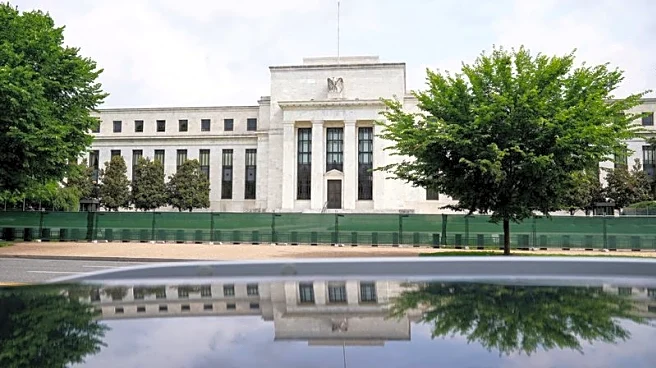What's Happening?
The Bank of Canada's governing council recently published minutes revealing a potential split among its members regarding future interest rate hikes. During the meeting on October 25, the council decided
to maintain the policy rate at a 22-year high of 5.00%, aiming to gather more evidence on the slowing growth and inflation. Some members expressed the likelihood of needing further rate increases to achieve the inflation target, while others believed maintaining the current rate could suffice if held long enough. This marks the first time the minutes have shown a possible policy split within the council, highlighting differing views on the economic outlook.
Why It's Important?
The discussion within the Bank of Canada reflects broader concerns about inflation and economic stability. Maintaining or increasing interest rates can significantly impact borrowing costs, consumer spending, and business investments. A potential rate hike could slow economic growth further, risking a deeper recession, while keeping rates steady might not sufficiently curb inflation. The bank's decision is crucial for stakeholders, including businesses and consumers, who are sensitive to changes in interest rates. The outcome will influence economic strategies and financial planning across Canada and potentially affect international markets.
What's Next?
The Bank of Canada plans to revisit the need for rate hikes as more economic data becomes available. The council's decision will depend on future inflation trends and economic performance. Stakeholders, including economists and financial analysts, will closely monitor upcoming data releases to gauge the likelihood of rate adjustments. The bank aims to balance cooling the economy to reduce inflation without triggering a severe recession, a delicate task that requires careful analysis and strategic decision-making.
Beyond the Headlines
The minutes reveal underlying tensions within the Bank of Canada regarding monetary policy direction. This internal debate reflects broader challenges faced by central banks globally in managing inflation while supporting economic growth. The bank's approach to transparency by publishing minutes could influence public perception and market expectations, adding another layer to the economic narrative.












